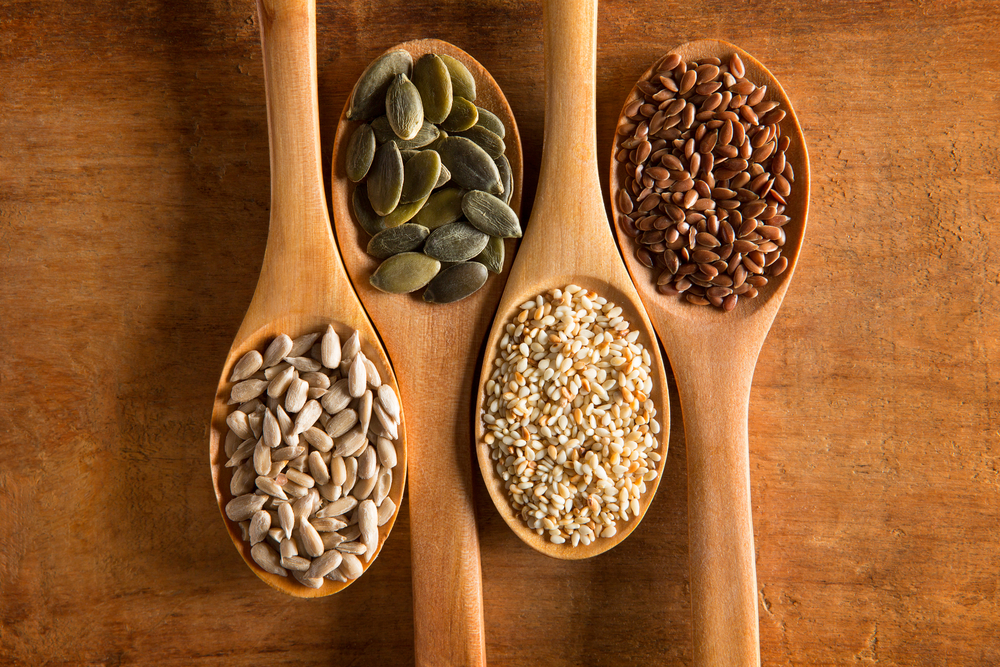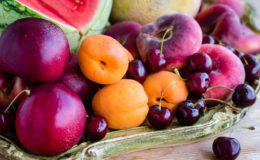“Let food be thy medicine and medicine be thy food.” ― Hippocrates
If you haven’t yet heard of seed cycling, it may not be long. While there are skeptics and those who doubt the power of food to support health, it’s being shared widely on social media and health blogs because people are having good results with it.
Seed cycling uses a variety of seeds to support hormone balance, fertility, and to ease the symptoms of menopause. There is a lot of anecdotal evidence that it reduces problematic symptoms related to the menstrual cycle and the hormone roller coaster that issues. Menopausal and post-menopausal women can still benefit by cycling the seeds according to the moon cycle and referring to the New Moon as Day One. I started seed cycling last year and I continue to do it because I have noticed that over time it has supported restoring and maintaining hormone balance.
**important disclaimer – If you have dealt with breast cancer or if you have a estrogen or progesterone sensitive tumor, consult your physician prior to engaging in seed cycling. I am trained as a health coach and I am not a medical professional.**
How seed cycling works works:
Phase 1: Days 1-14
Starting on the first day of menstruation (or on the new moon), consume 1 Tablespoon each of ground flax seeds (linseeds) and pumpkin seeds and added to you meals in any way you chose; smoothies, yogurt, porridge, soup, and so on.
It’s best to grind the seeds fresh each day to get the most nutrition. It is said that the seeds are best ground because it expands the surface area of the seeds allow for greater absorption of the nutritional content. I have a small coffee grinder that I use only for grinding seeds.
Phase 2: Days 15-28
Starting on Day 15, or alternately on following ovulation if that comes sooner, switch to 1 Tablespoon each of ground sesame seeds and sunflower seeds for the remainder of the month.
Why seed cycling works:
It’s all about restoring balance. There are all kinds of hormone mimickers in the environment, especially estrogen that are prevalent in plastics and cosmetic products. They actually become present in the body and send our hormones out of balance with too much estrogen. To make matters worse, excess stress contributes to the depletion of progesterone which coupled with high estrogen leads to the cause of experiencing PMS symptoms such as headaches, cramping, moodiness, acne, weight gain, and is related to low libido and thyroid problems.
During phase one, flaxseeds are the phytoestrogens supporting estrogen balance that is naturally increasing after plummeting just before menstruation while pumpkin seeds contain zinc, which has been shown to reduce cramping.
In phase 2, sunflower seeds and sesame are high in vitamin E, which has been shown to support production of progesterone, which in a healthy cycle rises following ovulation in the second half of the month.
Seed cycling is rooted in deep nutrition and using diet as nutritional therapy. I first heard about Seed Cycling when reading a book called The Metabolic Approach to Cancer by Dr. Nasha Winters and Jess Higgins Kelley which extensively explores how utilizing food is used as medicine to regulate balance in the body to support the elimination of cancerous cells and other diseased cells in the body. Her research exploration is based on the metabolic theory of cancer for which Otto Warbug was awarded a Nobel Prize in the 1920s. While this book explores metabolism it is also recognizes that hormone balance is a key factor in the process of healthy metabolism and essential to complete wellness both in the body and in the mind.
Seed cycling works to support the hormone fluctuations of the menstrual cycle and the phases that occur through the month. It has the potential to reduce symptoms of hormone imbalance and there appears to be no harm in trying it out. While there is certainly a role for strong medications, we must consider that they often come with side effects. It may take a little longer, but in many cases it’s possible to arrive at similar results with appropriate dietary adjustments with almost no risk of negative side effects. Be aware that it may take up to three months for the benefits of seed cycling to to kick in, so be patient and trust the process of your body restoring to balance.
Recommended reading to understand more about the role of food in deeply nourishing our bodies:
Deep Nutrition by Dr. Catherine Shanahan
The Metabolic Approach to Cancer by Dr. Nasha Winters and Jess Higgins Kelley







